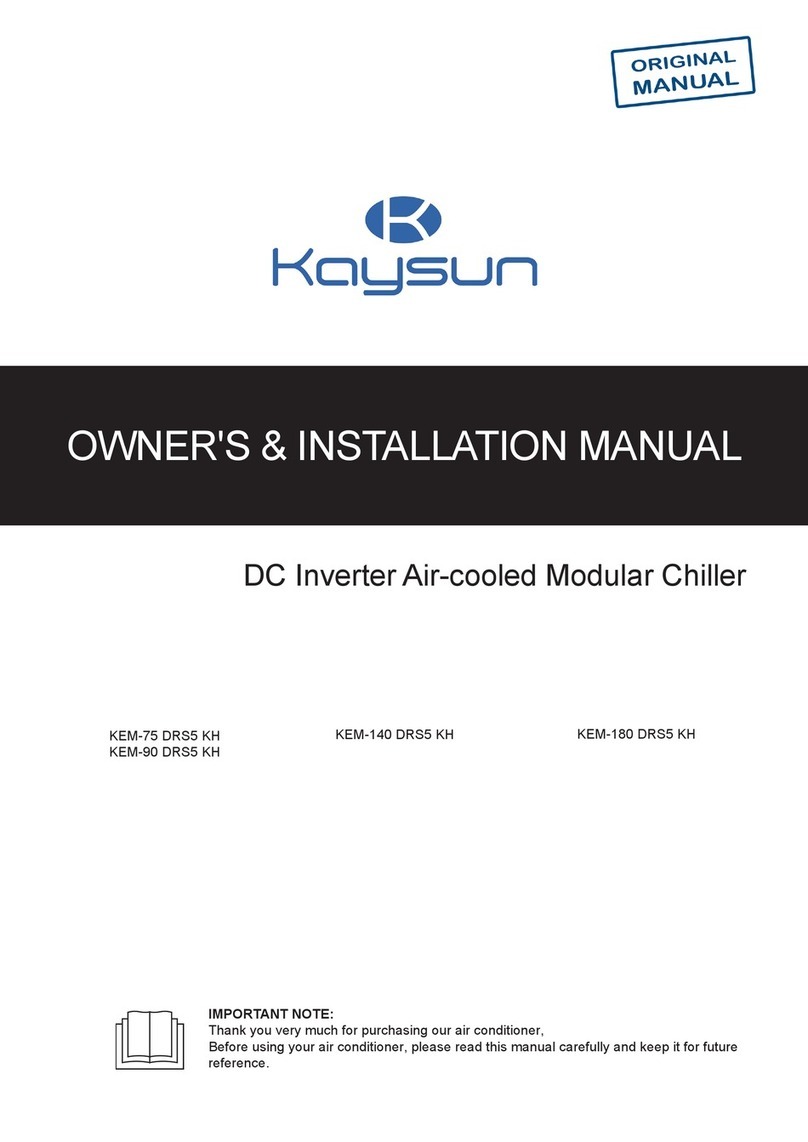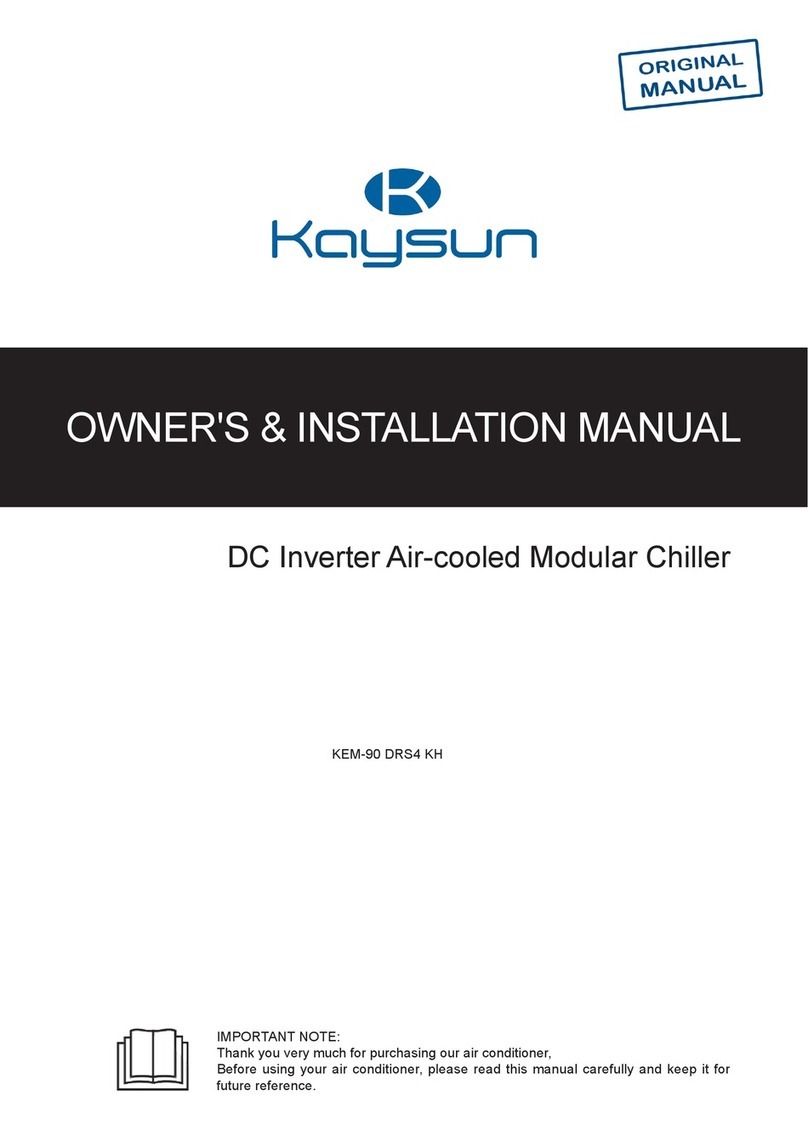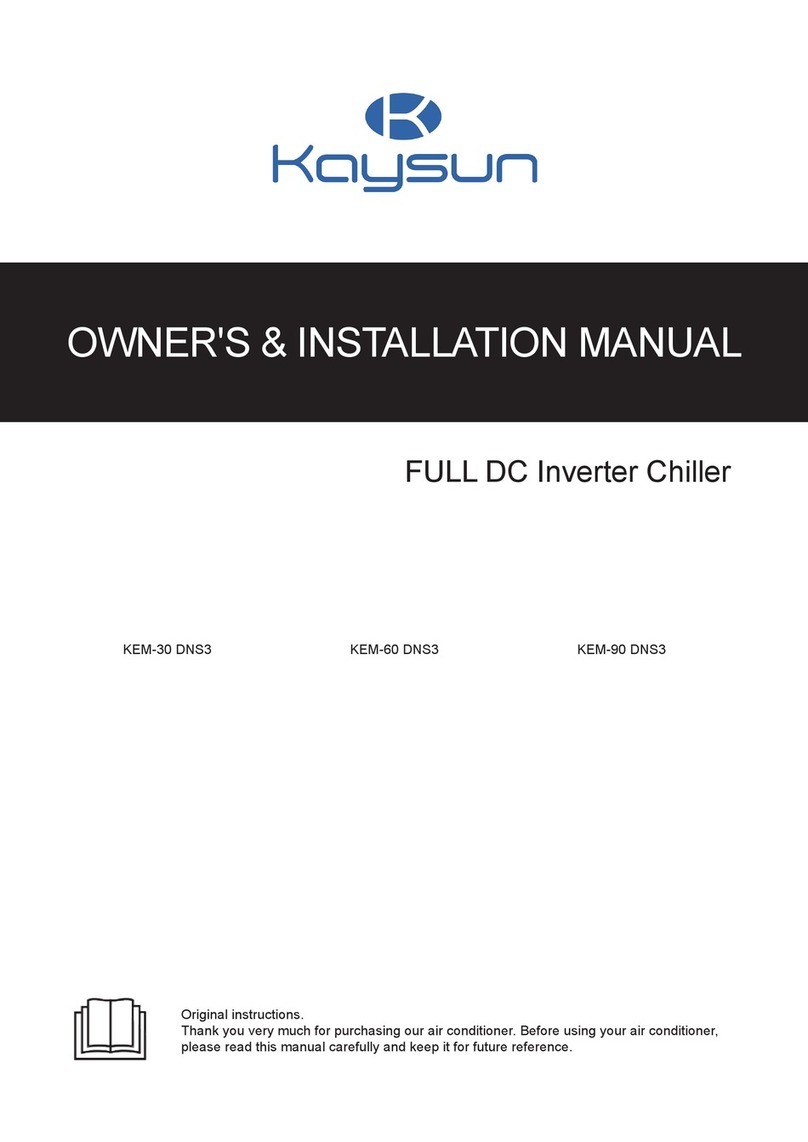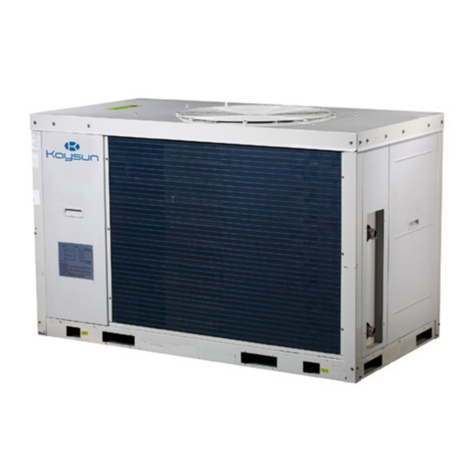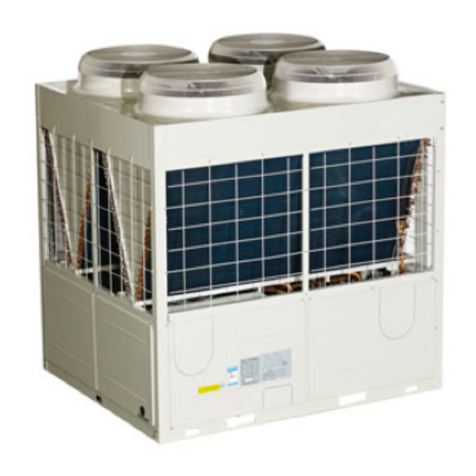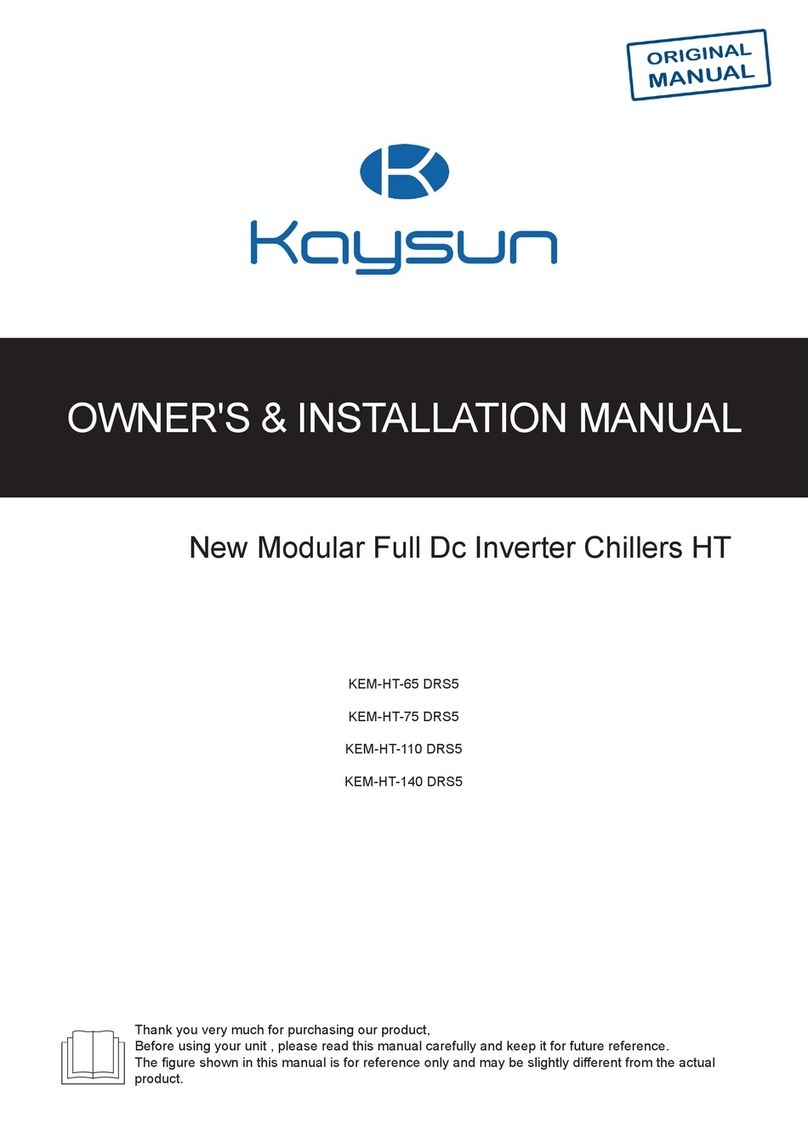
3
WARNING
Servicing shall only be performed as recommended by the equipment manufacturer. Maintenance and repair
requiring the assistance of other skilled personnel shall be carried out under the supervision of the person
competentintheuseofammablerefrigerants.
Tear apart and throw away plastic packaging bags so that children will not play with them.Children playing with
plastic bags face danger by suffocation.
Safely dispose of packing materials such as nails and other metal or wood parts that could cause injuries.
Askyourdealerorqualiedpersonneltoperforminstallationworkinaccordancewiththismanual.Donotinstallthe
unityourself.Improperinstallationcouldresultinwaterleakage,electricshocksorre
Besuretouseonlyspeciedaccessoriesandpartsforinstallationwork.Failuretousespeciedpartsmayresultin
waterleakage,electricshocks,re,ortheunitfallingfromitsmount.
Installtheunitonafoundationthatcanwithstanditsweight.Insufcientphysicalstrengthmaycausetheequipment
to fall and possible injury.
Perform specified installation work with full consideration of strong wind, hurricanes, or earthquakes. Improper
installation work may result in accidents due to equipment falling.
Makecertainthatallelectricalworkiscarriedoutbyqualiedersonnelaccordingtothelocallawsandregulations
and this manual using a separate circuit. Insufficient capacity of the power supply circuit or improper electrical
constructionmayleadtoelectricshocksorre.
Be sure to install a ground fault circuit interrupter according to local laws and regulations. Failure to install a ground
faultcircuitinterruptermaycauseelectricshocksandre.
Makesureallwiringissecure.Usethespeciedwiresandensurethatterminalconnectionsorwiresareprotected
fromwaterandotheradverseexternalforces.Incompleteconnectionorafxingmaycauseare.
When wiring the power supply, form the wires so that the front panel can be securely fastened. If the front panel is
notinplacetherecouldbeoverheatingoftheterminals,electricshocksorre.
After completing the installation work, check to make sure that there is no refrigerant leakage.
Never directly touch any leaking refrigerant as it could cause severe frostbite.Do not touch the refrigerant pipes
during and immediately after operation as the refrigerant pipes may be hot or cold, depending on the condition of
therefrigerantowingthroughtherefrigerantpiping,compressorandotherrefrigerantcycleparts.Burnsorfrostbite
are possible if you touch the refrigerant pipes. To avoid injury, give the pipes time to return to normal temperature
or, if you must touchthembe sure to wear protective gloves.
Do not touch the internal parts (pump, backup heater, etc.) during and immediately after operation. Touching the
internal parts can cause burns. To avoid injury, give the internal parts time to return to normal temperature or, if you
must touch them, be sure to wear protective gloves.
Do not use means to accelerate the defrosting process or to clean,
other than those recommended by the manufacture.
The appliance shall be stored in a room without continuously operating
ignitionsources(forexample:openames,anoperatinggasappliance
or an operation electric heater.)
Do not pierce or burn.
Be aware that refrigerants may not contain an adour.
DANGER
Ground the unit.
Grounding resistance should be according to local laws and regulations.
Do not connect the ground wire to gas or water pipes, lightning conductors or telephone ground wires.
Incomplete grounding may cause electric shocks.
- Gas pipes: Fire or an explosion might occur if the gas leaks.
- Water pipes: Hard vinyl tubes are not effective grounds.
- Lightning conductors or telephone ground wires: Electrical threshold may rise abnormally if struck by a lightning
bolt.
Install the power wire at least 3 feet (1 meter) away from televisions or radios to prevent interference or noise.
(Dependingontheradiowaves,adistanceof3feet(1meter)maynotbesufcienttoeliminatethenoise.)
Donotwashtheunit.Thismaycauseelectricshocksorre.Theappliancemustbeinstalledinaccordancewith
national wiring regulations. If the supply cord is damaged, it must be replaced by the manufacturer, its service
agentorsimilarlyqualiedpersonsinordertoavoidahazard.
Caution:Riskofre/
ammablematerials



